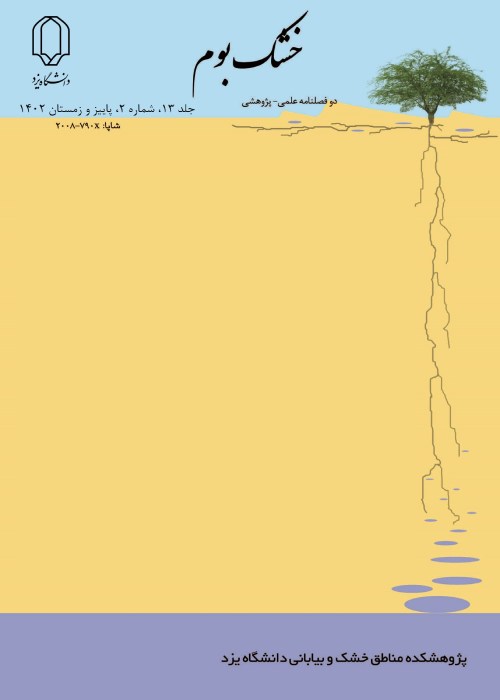Evaluation of factors affecting resilience cultivation pattern of urban green spaces for arid land (Case study: Qom city)
Develop of sustainable green spaces in cities will lead to unsustainability, if this development is done without evaluating the factors affecting the resilience of plant species and applying inappropriate planting pattern due to ignore the aforementioned factors. The main purpose of this study is to evaluate factors affecting the resilience of plant species for the development of urban green space in Qom and providing a list of plant species compatible with specific semi-arid environmental conditions. This study tries to quantify the qualitative indicators of plant species characteristics to evaluate their comparison in relation to resilience criteria. For this purpose, beforehand the criteria and sub-criteria of plant resilience were determined based on related literature and the authors’ experiences. Then, according to the criteria of plant resilience to soil, water, climatic conditions, urban pollution and ecological conditions of the region, plant species is properly evaluated and prioritized by Fuzzy Hierarchical Analysis (FAHP) and FTOPSIS. Consistent findings indicate that from the experts' point of view, the most crucial factors affecting plant resilience in green space of Qom are, water (0.273), soil (0.254), climate (0.199), Ecological conditions (0.180) and urban pollution (0.092) accordingly. Moreover, plants' resistance to soil salinity (0.075), resistance to evapotranspiration conditions (0.069), resistance to water shortage (0.067), resistance to water salinity (0.067) and resistance to adverse environmental factors (0.063), were promptly recognized as the most relevant sub-criteria of plant resilience. Finally, tree species including Tamarix gallica, Populus euphratica, Eucalyptus globules, Aianthus altissima, Pistacia chinensis, Pinus Mugo and black pine and Pinus nigra are determined as resilient species. The allocated proximity coefficient is 0.90, 0.89, 0.88, 0.86, 0.85, 0.85 and 0.84 respectively. As result, aforementioned species can be widely used in urban green spaces based on the local facilities and conditions of each area of the city.
- حق عضویت دریافتی صرف حمایت از نشریات عضو و نگهداری، تکمیل و توسعه مگیران میشود.
- پرداخت حق اشتراک و دانلود مقالات اجازه بازنشر آن در سایر رسانههای چاپی و دیجیتال را به کاربر نمیدهد.



